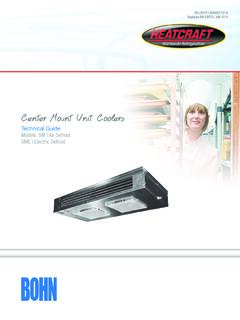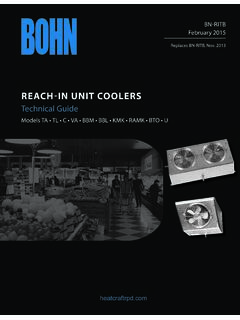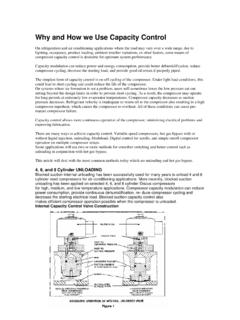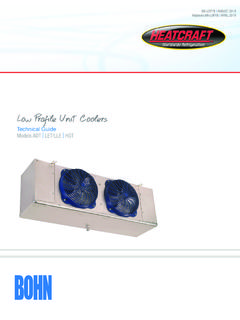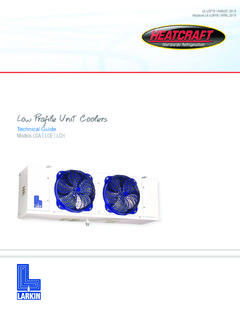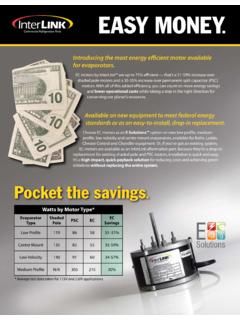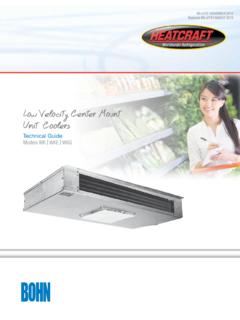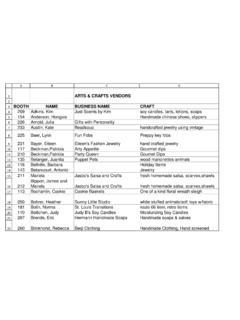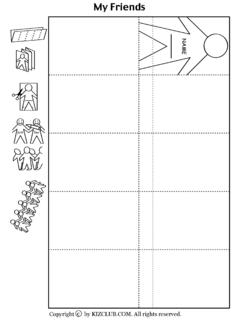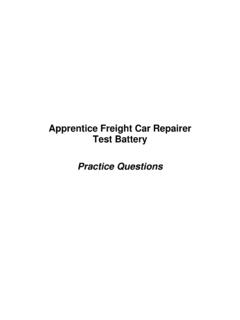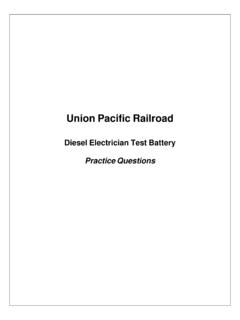Transcription of Technical Topic Evacuation of a Refrigeration …
1 Technical Topic Evacuation of a Refrigeration system As a Factory Field Service Engineer, I am regularly called upon to assist in troubleshooting a problem job. As I discuss the facts of the issues with the contractor or technician I hear all to often those simple words Yes I evacuated the system . I ran my vacuum pump for an hour. The system can't have moisture in it . Well, how long is long enough? We will attempt to answer this question in this article. Installation Practices A Refrigeration system is designed to operate with oil and refrigerant flowing internally. Anything else is considered foreign to the system and must to be removed. This includes moisture, noncondensible gases such as air, oxides from brazing without a nitrogen purge, pipe plugs, stones from the gravel roof, dead bugs from transporting unprotected tubing on the pipe rack of your truck and we could go on and on.
2 Good piping and installation practices are the first steps in keeping a system clean during installation. Working Smart is the second step. You can do this by planning your scope of work in a manner that allows you to complete other tasks such as system wiring or insulating piping while the system is being evacuated properly. Good piping and installation practices if followed will actually reduce Evacuation time, extend the service life of the equipment, and reduce warranty related costs. This translates to a happy customer. Evacuation and Dehydration At Sea Level and 68F unknown as Standard Conditions one atmosphere excerpts a pressure of psi (pounds per square inch) or in. Hg (inches of mercury). At this pressure a calibrated compound pressure gauge will read 0 psig (pounds per square inch gauge).
3 This pressure is referred to as Standard Pressure and is equal to one atmosphere (psia). At this pressure pure water boils at 212F. If we were to move our container of pure water to an altitude higher than sea level say Denver Colorado (5,000 feet above sea level) our same container of water will boil at F since the atmosphere excepts approximately 25 in. Hg, psi or psia. If we were to increase the pressure on our container of pure water to 15 psi or 30 psia, which is above standard conditions our boiling point will rise to 250F because the boiling point of water can be changed and controlled by controlling the vapor pressure above the water. This is known as the Pressure Temperature Relationship. Figure 1. Refer to Figure 1. There are two pressure scales on the face of the gauge.
4 Above 0 is the scale for measuring positive pressure or pressure above one atmosphere in pounds per square inch. The scale below 0 is used to measure negative pressure or pressure below one atmosphere in inches of mercury. This scale is accurate up to 29 inches of mercury. Vacuum levels between 29 in Hg and 30 (absolute vacuum) are measured in Microns. One thousand microns is equal to one millimeter of mercury and are measured with an electronic vacuum gauge. If we were to reduce the internal pressure of a sealed Refrigeration system to 29 we can say the we have evacuated the system meaning that we have removed air and noncondensable gases and in doing so we have lowered the boiling point of any remaining moisture in the system but we have not dehydrated the system if moisture remains.
5 By attaching an electronic micron gauge to the system we can measure the vacuum level between 29 and 30 inches of mercury. Figure 2. The scale of the electronic gauge ranges from 0 to 5,000 microns. As we continue to extract molecules of vapor from the system with a vacuum pump the decrease in pressure will register on the micron gauge conversely, if we were to stop extracting molecules of vapor and allow the system to remain static no rise in pressure will be noted on the micron gauge provided the system in completely sealed and dehydrated no moisture is present. If moisture is present a notable rise in pressure will be seen on the micron gauge as liquid moisture boils off into a vapor. Although not practical, vacuum can also be measured with a U tube mercury manometer.
6 (See Figure 3). Insert picture of Manometer Figure 3. This device has a glass U tube graduated in inches of mercury. One end of the U tube is connected to the system and the other end is open to the atmosphere. When the internal pressure of the system is equal to atmospheric pressure the mercury level in the side open to the atmosphere is equal to the side connected to the system . As the system pressure decreases so does the level open to the atmosphere. A wet bulb vacuum indicator can also be used and proves very accurate in the absence of a Micron Gauge. Insert picture of Wet Bulb Indicator Figure 4. This device uses Methyl Alcohol Anhydrous, which is pour through a fitting provided at the top of the cylinder. Fill to the middle of the lower port and connect the Wet Bulb Indicator to the Evacuation line.
7 Evacuate until the wet bulb thermometer reads 12F. Break the vacuum to 0 psi with the same refrigerant that will be charged into the system and re-evacuate to 12F. The system is now dry. A chart is provided to convert wet bulb temperature to microns. Figure 5. We have discussed several methods of measuring a vacuum but the subject is mute unless we can actually achieve low micron levels. Equipment maintenance is paramount. The vacuum pump must be in good operating condition, leak free and clean. You should change oil prior to every use. Besides providing pump lubrication the oil also provides an internal seal. Clean fresh oil is a must. Follow your pump manufacture's maintenance instructions. Use good quality hoses and be sure they are free cuts, blemishes and they do not leak.
8 If you plan on pulling a vacuum below 500. microns consider using copper tubing instead of hoses whenever possible. Getting Set Up Most service trucks are equipped with vacuum pumps capable of pumping 5 or 6 cubic feet per minute. On installations larger than twenty horsepower you may need to use a larger capacity pump or more than one pump in order to work efficiently. Pressure test the system to be evacuated with dry nitrogen and a trace charge of refrigerant. Be sure not to exceed the manufacture's test pressure limits. (Most evaporators have a 150-psi limit) Allow the system to stand under pressure. If no drop in pressure is noted over a twelve-hour period you can rest assured the system is sealed. You should never use a vacuum to test for leaks.
9 You will not be able to find a leak under vacuum and you will contaminate the system with moisture and noncondensible gases. Never pull a vacuum through a Schrader valve. This practice will only increase your Evacuation time due to the high restriction it will cause. Always remove the Schrader valve and reinstall it when the system is under a slight positive pressure. If you plan of running your vacuum pump overnight it is highly recommended to use a full port solenoid valve inline with the vacuum line to the pump so you will not loose the vacuum during a power failure. Systems that are known to have high moisture contamination such as water-cooled equipment or chillers that suffered a tube failure should be purged with dry nitrogen. This is done by connecting a nitrogen cylinder to the equipment in a manner that will permit a low volume purge to remove as much moisture as possible by evaporation.
10 Drain the compressor oil however do not recharge with oil until the system is completely dry. Drain as much water as possible paying close attention to all the low points. One pound of water, approximately one pint will produce 2948 cubic feet of water vapor. Using a 5 cfm vacuum pump you can see that it will take a considerable amount of time to boil off that much moisture. You may want to consider using a higher capacity pump or more than one pump. Figure 6 Nitrogen Purge Refrigeration & Air Conditioning Technology A cold trap may be required to prevent contamination of the vacuum pump oil sump. As the pump pulls high volumes of water vapor out of the system these vapors can condense inside the pump eventually displacing the oil and ruining the pump.
